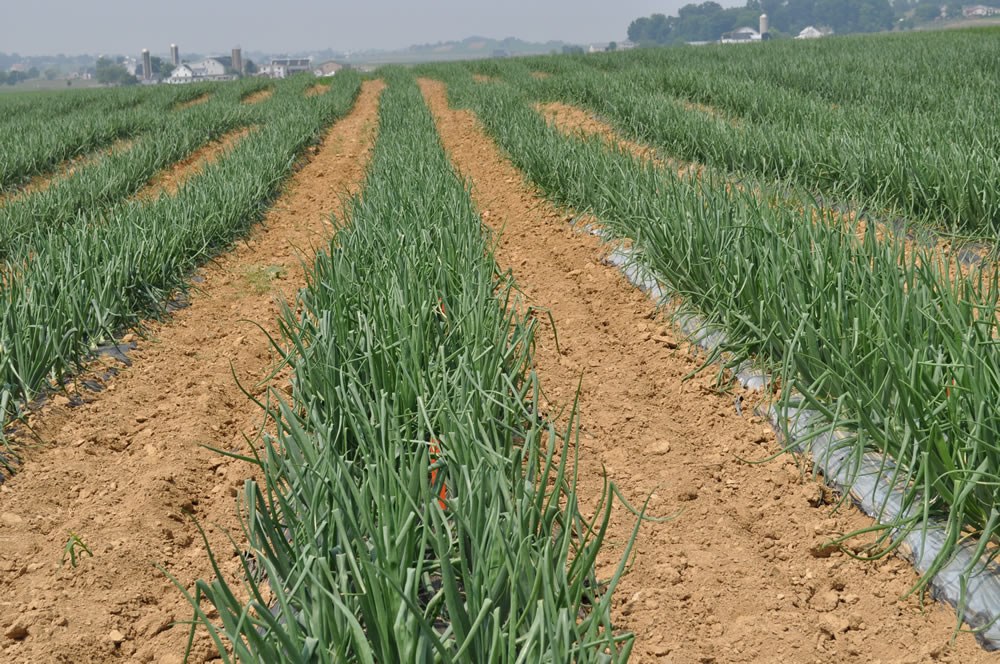Onion growers in Pennsylvania and elsewhere are constantly challenged by yield losses due to bacterial diseases.

Figure 1. Bleached and collapsed interior onion leaves characteristic of bacterial center rot.
In Pennsylvania, the majority of onions grown are marketed through the PA Simply Sweet Onion Program, the state's only trademarked crop. In 2016, 94 growers produced program onions on 125 A which were valued at over $1.4M; over quadruple the production since the program's inception in 2004. Unfortunately, onion growers in Pennsylvania and elsewhere are constantly challenged by yield losses due to bacterial diseases, even when actively trying to manage the disease. In some fields losses due to the bacterial disease center rot can approach 50% under favorable disease conditions.
The major bacterial pathogens of onion in PA are the center rot pathogens, Pantoea agglomerans and P. ananatis, and the soft rot pathogens, Pectobacterium carotovorum and Pseudomonas marginalis, with some farms experiencing losses due to slippery skin, caused by Burkholderia gladioli. Center rot is characterized by a single rotting scale within the bulb that resulted from the bacteria moving down a symptomatic interior leaf into the neck and then bulb. The surface rot pathogens often cause a soft rot that originates in the outer bulb scales and is more easily culled in the field during harvest. Center rot is a particular problem when growers store bulbs for later sale because diseased bulbs are not detected at harvest and are then are rejected by the wholesaler after coming out of storage due to the discolored interior rings.
Through replicated field and commercial on-farm trials over several years, former graduate students Emily Pfeufer and Jennie Mazzone worked to elucidate the on-farm management and environmental factors that contributed to increased diseases losses (e.g. increased soil temperatures at onion bulbing and nitrogen fertility) as well as evaluate selected management tactics based on those contributing factors (e.g. augmenting nitrogen rate and application timing and cultivar susceptibility). Additional trials are being conducted to develop a disease scouting protocol that could serve as a tool to help growers time harvesting their onions so they can maximize yield while minimizing bacterial disease losses.
Funding for this research has come from the Pennsylvania Vegetable Growers Association and PA Vegetable Marketing and Research Program, Pennsylvania Department of Agriculture Specialty Crop Block Grant, Northeast IPM Center.

Figure 2. Sweet onions being grown on silver plastic in Pennsylvania to reduce soil temperatures. Two of our unharvested research plots can be seen in the upper right corner of the picture.

